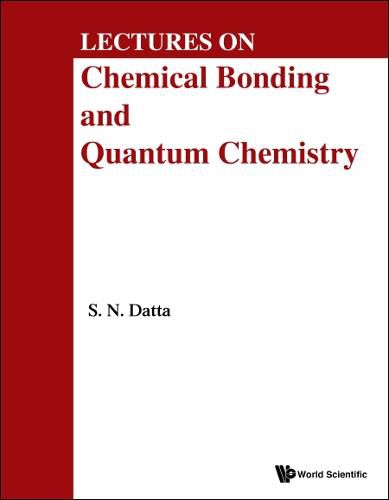Readings Newsletter
Become a Readings Member to make your shopping experience even easier.
Sign in or sign up for free!
You’re not far away from qualifying for FREE standard shipping within Australia
You’ve qualified for FREE standard shipping within Australia
The cart is loading…






The concept of a chemical bond evolved from a variety of experimental observations. It became useful to understand, at times even predict, the molecular structure, reactivity and mechanism of chemical reactions. Every aspect of the concept of bonding received a quantitative interpretation from the advent of quantum mechanics and its application to chemistry.In Lectures on Chemical Bonding and Quantum Chemistry the reader will find a comprehensive discourse on the basic interpretation of the chemical bond as well as current understanding in terms of a ‘dancing’ molecule that not only travels, rotates and pulsates around an equilibrium molecular structure, but also interacts and collides with other molecules, thereby transferring linear and angular momentum characteristics and adjusting total energies. One will also find a thorough survey of quantum mechanical methodologies for calculation of molecular characteristics in specific states and their changes under spectroscopic transitions, tunneling, electron and proton transfer phenomena, and so on. Guides to more advanced levels of theory are also provided.
$9.00 standard shipping within Australia
FREE standard shipping within Australia for orders over $100.00
Express & International shipping calculated at checkout
The concept of a chemical bond evolved from a variety of experimental observations. It became useful to understand, at times even predict, the molecular structure, reactivity and mechanism of chemical reactions. Every aspect of the concept of bonding received a quantitative interpretation from the advent of quantum mechanics and its application to chemistry.In Lectures on Chemical Bonding and Quantum Chemistry the reader will find a comprehensive discourse on the basic interpretation of the chemical bond as well as current understanding in terms of a ‘dancing’ molecule that not only travels, rotates and pulsates around an equilibrium molecular structure, but also interacts and collides with other molecules, thereby transferring linear and angular momentum characteristics and adjusting total energies. One will also find a thorough survey of quantum mechanical methodologies for calculation of molecular characteristics in specific states and their changes under spectroscopic transitions, tunneling, electron and proton transfer phenomena, and so on. Guides to more advanced levels of theory are also provided.